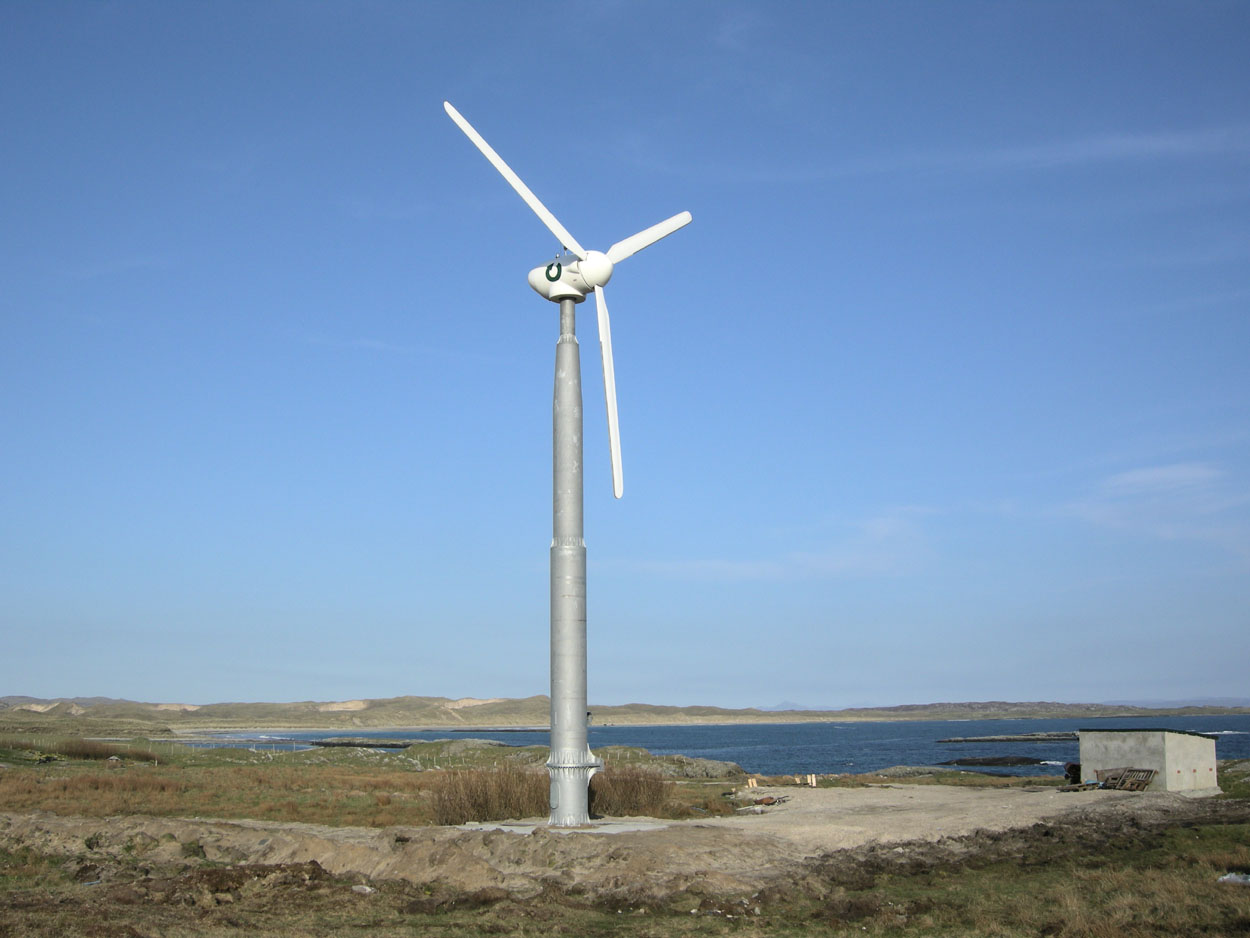New Wind Turbine Company Chooses Unidrive SP
A new entrant to the wind turbine market, HS Harbon & Sons, has standardised on AC drives from Control Techniques for two reasons: reliability and versatility.

Harbon Wind TurbineTheir new turbine is capable of a return on investment (ROI) of just four years.
HS Harbon & Sons, a Doncaster-based electrical engineering company, went into partnership with local businessman Richard Crowe to set up Harbon Wind Turbines. Harbon Wind Turbines’ aim was to design an advanced concept turbine that would outperform the products of established suppliers. Now the company has created and tested the 60 kW HWT60 variable speed wind turbine and has already taken its first orders for the model.
“The HWT60 is designed to optimise the blade power output by changing rotor speed to reflect changing wind conditions,” explains Dave Harbon, Technical Director. “This is why we use a variable speed drive in regeneration mode to return the generated power to the mains grid. We use Control Techniques’ drives because their efficiency, considerable programming capability and communications give us the precise control that we need.”
Research carried out by Harbon Wind Turbines has shown that the efficiency of the turbine is significantly improved by the ability to change the rotor speed. Each turbine is fitted with four AC drives from Control Techniques. Two small 0.5 kW Unidrive SP AC drives are fitted at the top of the tower, one controlling yaw (to turn the turbine into the wind) and the other controlling the hydraulics for the braking system and also acting as an interface to transmit inputs on wind speed, temperature, rotor shaft rpm and vibration to the main drive. Two 75 kW Unidrive SP drives at the base of the tower, working in regenerative mode, feed AC power back to the grid.
All the AC drives are fitted with plug-in SM Application modules which give ultra fast CTNet communications and I/O modules to give extra inputs/outputs. The base modules also have Ethernet modules for feedback to the local control screen and for remote access via smart phone.
The HWT60 is nominally rated at 60 kW but it can exceed this for short periods. It is ‘Class 1 rated’, meaning it is approved for use in locations anywhere in the UK and is designed to withstand gales in excess of 150 mph. This makes it ideal for sites such as the outer islands of Scotland where high gusting winds are common. Depending on the site, a payback on the initial investment can be expected in as little as four years.
The chassis for the turbine has been designed and built specifically for the blades, motor/generator and gearbox. The rotor shaft has two bearings, one either side of the gearbox, to give exceptional strength and durability. The blades are a glass fibre composite construction with a carbon fibre brace throughout the length of each blade and are from a company who has been making such blades for over 25 years. Any fault initiates a controlled shut-down of the system.
“A further benefit of this type of turbine is that it is considerably quieter,” says Dave Harbon. “At the optimum revs, the turbine is very quiet indeed. What’s more, the high efficiency drives are very frugal on start up – using about the same power consumption as an electric kettle!”
“Control Techniques has been very supportive throughout the development,” adds Dave Harbon, “writing operational software and adding safety features such as automatic braking. The intelligence of the drives has eliminated the need for additional PLCs, making design very straightforward as well as keeping costs down. We think the HWT60 is one of the most cost effective turbines in the world.”
The HWT60 wind turbine is eligible for the Feed-in Tariff via the ROO-FIT process with each energy supplier. It is durable, efficient, safe and quiet in operation and is built in Doncaster, with all parts being sourced in the UK or the EU.
Harbon Wind Turbines continues to develop support systems for its turbines. For example, customers can access real-time data so that they can see just how much income each turbine is generating. “The HWT60 is ideal for agricultural sites,” concludes Dave Harbon, “where the power generated is used immediately on site, but the farmer benefits financially from the generous Feed-in tariff.” For more information visit http://www.harbonwindturbines.co.uk.
CONTACT
Andy Cann
Control Techniques, Emerson
andy.cann@emerson.com
www.controltechniques.com
+44 (0) 1686 612996
Monday 20 August 2012 / file under Utilities | Power | Environmental | Engineering


